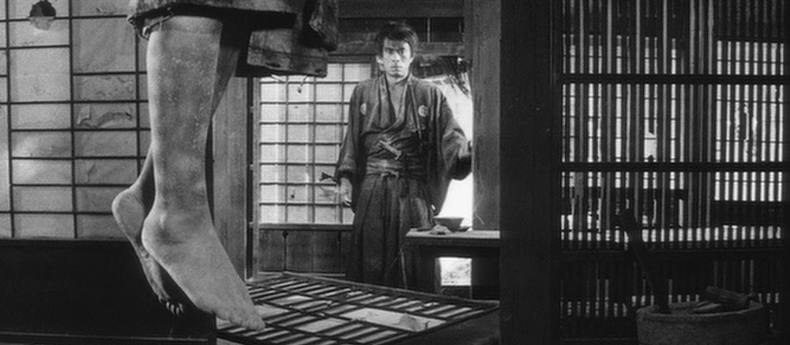
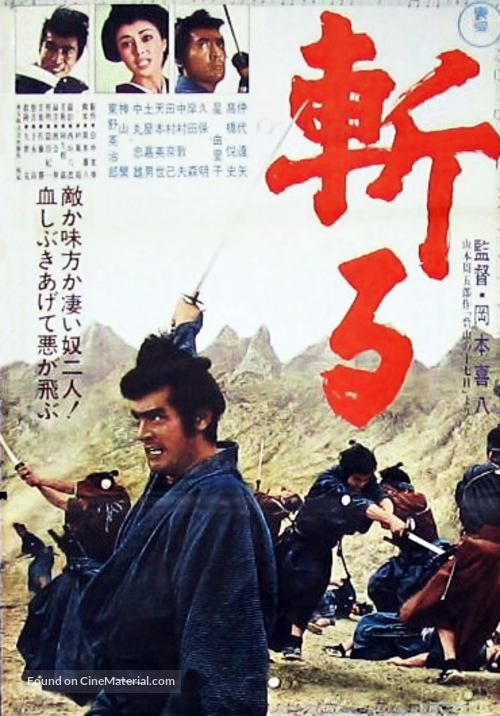
“A vagrant couldn’t do all this.”
From Kurosawa’s classics to the Zatoichi series, humor is often employed in samurai films to lighten the otherwise grim tone. The jokes are not as pronounced as in the Hollywood action comedies that became prevalent in the 1980s. Rather, it is offhand and incidental to the plot. For instance, the comedic delivery of a line or an exaggerated physical movement. But in Kihachi Okamoto’s Kill!, the comedy is foregrounded, with plot, character interactions, and fight scenes all aiming toward an absurd parody of the samurai genre. However, even though a parody, it never completely departs from its genre roots, and more or less works even if all of the humor is missed (which is possible as much is potentially lost in translation).
Based on the same source material as Kurosawa’s Sanjuro (the sequel to the classic Yojimbo), the story is outlandish, beginning with two starving men trying and failing to capture a chicken to fill their grumbling bellies. As our two hungry men, a farmer who wants to be a samurai and a samurai who wants to leave that life behind him, move along their opposite trajectories, Kill! delivers a familiar but twisted and subverted version of the samurai formula.
Set in the 1830s, our disparate protagonists are the samurai aspirant Hanji (Etsushi Takahashi) and the former samurai Genta (Tatsuya Nakadai). Within minutes they both stumble their way hungry and travel-worn into a desolate town where political skirmishes have devastated the population. Hanji is there because he had been told it was a place to find employment as a samurai. Genta, jaded by the samurai life, has arrived to instigate the corrupt leaders, score some free food and maybe do some good deeds (similar to Mifune’s rōnin in Yojimbo and Sanjuro).
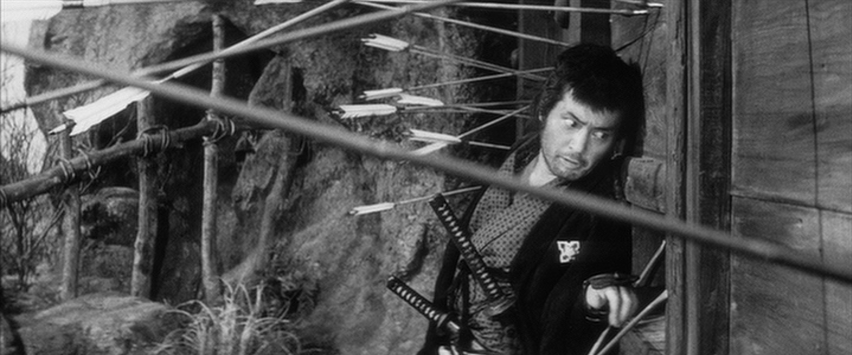
The political machinations drive the action. A group of samurai decide to assassinate their corrupt chancellor, but are double-crossed and forced to retreat to a stronghold in the mountains where fighting breaks out. Genta and Hanji end up on opposite sides of the clan skirmish but frequently find their paths crossing. Hanji is entirely incapable of dispatching Genta but Genta has no reason to wish to kill Hanji. And so, when Hanji is sent to kill Genta, he must settle for Genta’s suggestion: simply say that the deed was done and leave him alone. Thus a shaky partnership is formed.
Genta decides that helping the renegade group of samurai will cause the most disruption to the current system, while Hanji, who doesn’t have the intellectual capacity for political intrigue, relies on his morals and brute strength. The renegade samurai are attacked by two groups; one of them launching arrows that stick into the walls of their hideout, the other firing at them with rifles. Genta hatches a plan, and along with Hanji’s help, is able to outwit everyone else and save his own skin.
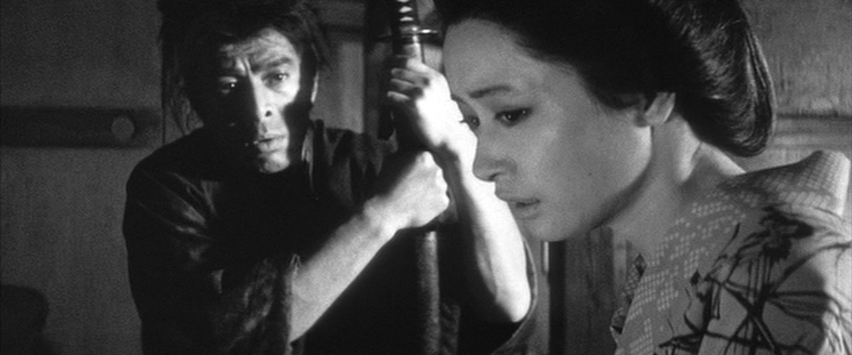
The film is put together very well; it has the look and feel of a classic samurai film.1 But it pushes the genre’s tropes to such a degree that it becomes almost farcical. It becomes challenging to take seriously, pushing too far into absurdity to be viewed the same way as a humor-tinged Kurosawa film. Sanjuro pushes the limits a little bit with its impudence, but it never devolves to the level of goofiness found here. In any case, coming off of one of the most visually stunning of all samurai films, Sword of Doom, Kihachi Okamoto and Tatsuya Nakadai bring ample talent to Kill!, balancing the silliness of the plotline and gags with solid craftsmanship. So even as the politicking is trite and convoluted, it allows the director to serve up some genuinely great action sequences. You must be open to the humor to grasp the full entertainment value of the film, but the skillful filmmaking ensure that Kill! works without it.
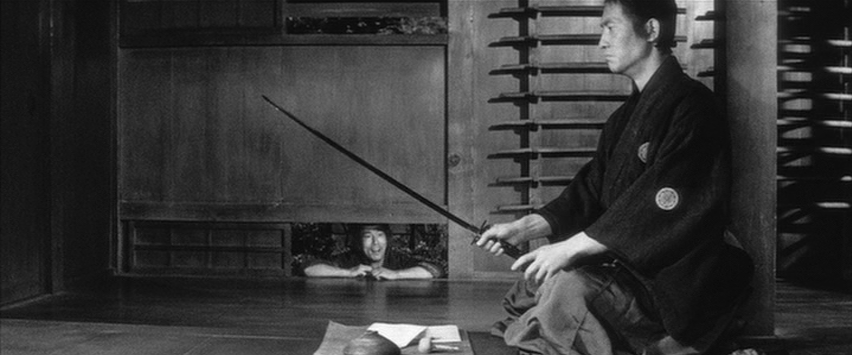
Kihachi Okamoto often combined rollicking action with low-brow comedy in an over-the-top yet visually compelling style. He didn’t always choose to be so obvious in mocking the samurai practices as he is here, which is what really sets Kill! apart from the films that positively portray the samurai code. Along with Masaki Kobayashi’s Harakiri (1962)—which also stars Tatsuya Nakadai—Kill! is the most suitable counterpoint to the countless films that built a legendary image of the samurai’s honorific deeds and unbreakable code. The film’s blend of genres features enough of the typical formula to pass as a genuine samurai film, but its black humor and cynical attitude toward the samurai way of life really do not fit the mold.
Kill! is a very good film; an oddball in the samurai genre that challenges the genre’s greatest films while remaining true to them. At times it borders on outright silliness, and at times on cinematic greatness. At times it comes off as genre pulp, while other times it appears to transcend the genre. I have mixed feelings, but it was certainly a radical and remarkable film for its era.
1. And it should. Okamoto had directed a handful of samurai films prior to this including Samurai Assassin (1965) starring Toshiro Mifune and the excellent Sword of Doom (1966) starring Tatsuya Nakadai (Genta in Kill!).